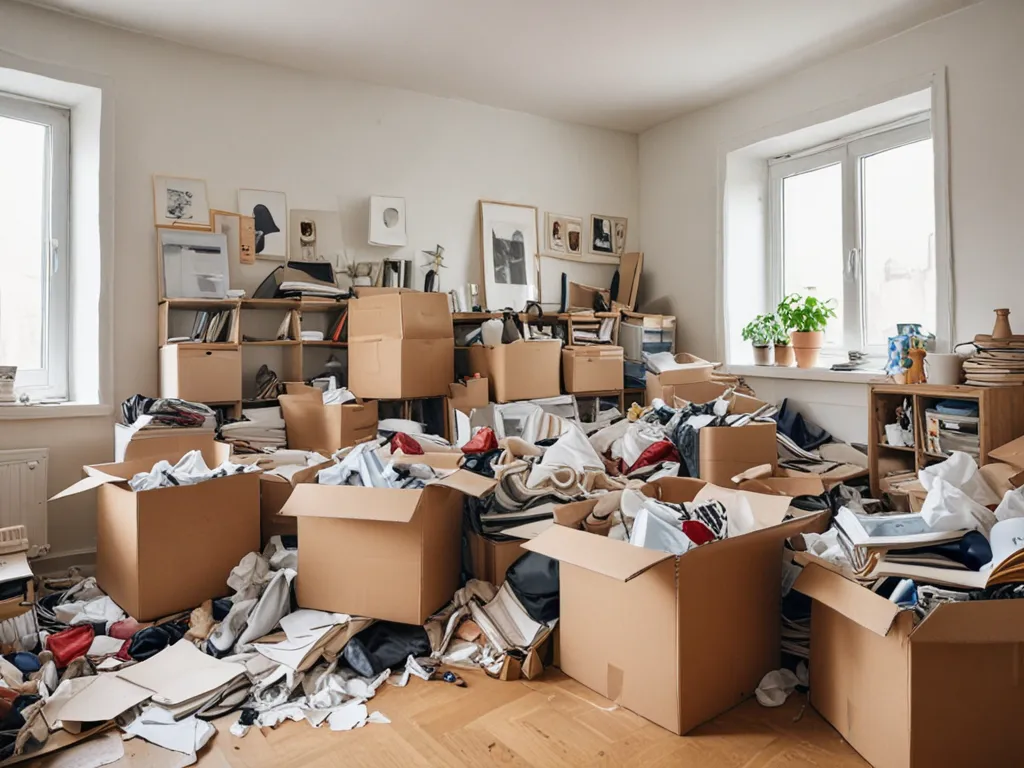Cleaning out a hoarder’s home can seem like an overwhelming task. As a professional organizer who specializes in hoarding cleanup, I’ve learned some effective strategies to make the process more manageable. Here are some tips on where to start when tackling a hoarded home:
Assess the Situation
The first step is to fully assess the extent of the clutter.
- Walk through the entire home to get a sense of how much needs to be cleared out. Pay attention to areas that are inaccessible or pose safety risks.
- Determine if the hoarding is primarily focused on certain types of items (e.g. newspapers, clothes, toys) or if it’s more generalized. This can help guide your cleanup plan.
- Identify any biohazards like rotting food, bugs, or rodents. You may need protective equipment or professional cleaning services.
- Look for safety hazards like blocked exits, tripping dangers, or fire risks from accumulated papers. Your safety should be the top priority.
- Consult a mental health professional if the hoarder will allow it. Underlying mental health issues often contribute to hoarding.
Gaining a complete understanding of the hoarding situation allows you to develop a tailored action plan.
Hold a Planning Session
Once you’ve assessed the home, hold a meeting with the hoarder and any other helpers. This allows everyone to get on the same page.
- Set goals and priorities. What areas should be tackled first? How much needs to be removed to make the home livable?
- Develop a room-by-room cleanup plan. Breaking it down into smaller tasks makes it less overwhelming.
- Discuss strategies to limit re-accumulation. This might involve counseling or decluttering with the hoarder regularly.
- Establish rules and boundaries. For example, decide if certain items should be saved for the hoarder to sort later.
- Assign roles based on each person’s abilities. Who will haul debris? Who will sort possessions? Who can offer emotional support?
Having an agreed-upon plan and objectives will make the cleanup process more focused and efficient.
Sort and Organize
Once your game plan is set, it’s time to start sifting through the clutter.
- Begin with more manageable spaces like hallways, exits, and main living areas. This helps create usable space quickly.
- Sort items into broad categories as you work. For example: trash, donate, sell, keep.
- Use organizing tools like bins, shelves, and clear bags to make sorting easier. Label containers clearly.
- Go slow to avoid becoming overwhelmed. Target small, achievable goals each day.
- Take frequent breaks to maintain energy and patience, especially when emotions run high.
- Hire help for hauling, cleaning, or providing hoarding counseling if needed. You don’t have to do it all alone.
Staying organized during the process will make the volume of possessions feel less daunting.
Dispose of Items Responsibly
Once clutter is sorted, it needs to be cleared out responsibly.
- Arrange professional junk hauling. They can remove large volumes offsite efficiently.
- Donate usable goods to charities like Goodwill. They may even pick up donations.
- Sell valuable items through consignment shops, auctions, or online marketplaces.
- Recycle or trash appropriately. Contact your local waste management company for guidance.
- Clean as you go to prevent re-accumulation. Disinfect surfaces and vacuum when spaces clear.
- Rent a dumpster for large-scale debris removal. Place in a driveway or alley for easy access.
- Obtain proper permits if you need to demolish or remodel damaged structures.
Taking the time to dispose of clutter legally and safely is an important part of the recovery process.
Provide Support
Tackling a hoarded home can be emotionally taxing for everyone involved. As the organizer, remember to:
- Give encouragement and celebrate small victories. Recognize how difficult this process can be.
- Offer counseling resources. Many hoarders benefit from working with a mental health professional.
- Be patient and avoid judgement. Express empathy and understanding when emotions flare up.
- Set healthy boundaries regarding your own limitations and needs. You cannot do this all by yourself.
- Take breaks when feeling overwhelmed. Do some self-care to avoid burnout.
- Suggest ongoing support. After the big cleanup, regular maintenance can help prevent re-accumulation.
Providing compassion along with organizational skills is key for working successfully with hoarding clients long-term.
Cleaning up severe hoarding situations requires physical stamina along with emotional sensitivity. By breaking down the process into more manageable steps, assembling the right support team, and showing care for the hoarder, the job becomes less daunting. With time and patience, you can reveal a beautiful home buried beneath the clutter.







